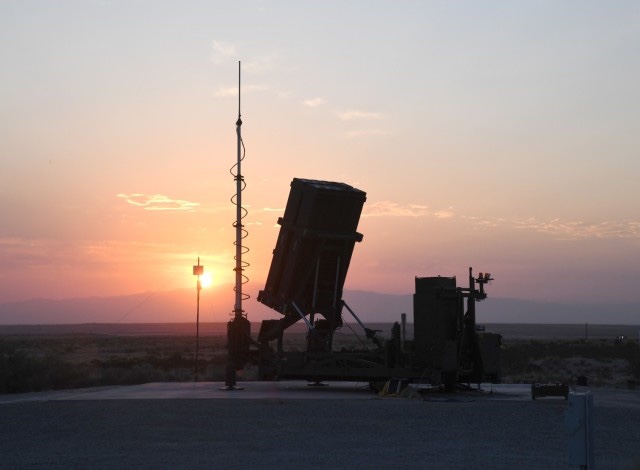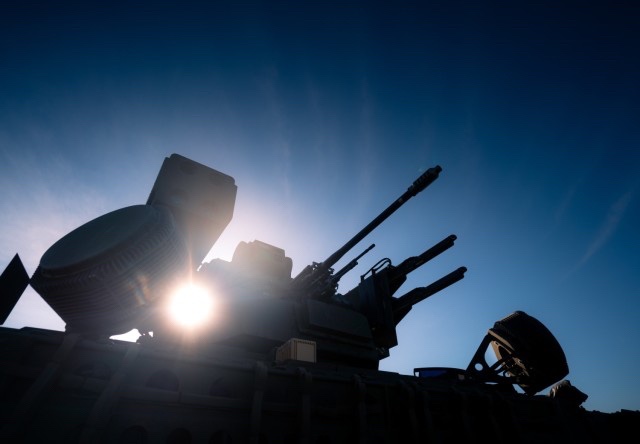
AUSTIN, Texas — The U.S. Army Futures Command Air and Missile Defense Cross-Functional Team, or AMD CFT, based in Fort Sill, Oklahoma, is coordinating and accelerating Army efforts to outpace strategic competitors who have invested heavily in indirect fire and missile capabilities.
The Army’s development of new air and missile defense technologies, which is the largest modernization undertaking of its kind since the Cold War, will serve to defend ground forces against air attacks, as well as protect the infrastructure of U.S. and allied forces against a host of adversary air and missile threats.
While a number of stakeholders are involved in the development, testing and eventual fielding of new air and missile defense systems, the AMD CFT’s specific focus is on strengthening the integration and synchronization of requirements and acquisition processes and resources.
“I’m honored and humbled for this opportunity, and really, to continue this momentum on the modernization path we’ve taken,” said incoming AMD CFT Director Col. Patrick M. Costello.
“The Army transformation that we’re undergoing right now is the biggest in many, many years — bigger than any of us have witnessed during our careers. And the capabilities that we’re bringing forward right now will fundamentally change the way that we are designed, and employ these capabilities, in support of the warfighters out there. So, an exciting time to be here at the CFT and an exciting time to be part of the air defense modernization efforts,” Costello said.
The AMD CFT is currently working on multiple projects that harness leading-edge technologies to protect military personnel and resources, as well as civilian populations.
These efforts include Army Integrated Air and Missile Defense — AIAMD — and its materiel solution, the Integrated Air and Missile Defense Battle Command System — IBCS; Maneuver Short-Range Air Defense — M-SHORAD; Integrated Fire Protection Capabilities — IFPC; and the Lower Tier Air and Missile Defense Sensor — LTAMDS.
AIAMD is a command-and-control program that integrates sensors, weapons and a common mission command capability across an integrated fire control network to provide a single air picture — bringing together many essential layers and systems that are currently functioning disparately.
AIAMD will be enabled by the development of IBCS, a keystone system that will provide a decisive battlefield advantage through weapon and sensor integration and a common mission-command system across all domains.
Once developed, IBCS will deliver integrated fires capability to the warfighter while improving battle space awareness, decision timing and protection against threats in complex integrated attack scenarios.
In December 2021, the U.S. Army’s Integrated Fires Mission Command Project Office awarded a competitive, best-value contract for the low-rate initial production and full rate production of IBCS over the next five years.
The contracted organization, Northrop Grumman, will deliver up to 160 systems to support air and missile defense modernization for the Army and foreign partners. Following a full rate production decision in FY 2023, the contract will enable the program to seamlessly ramp up production to meet fielding priorities.
M-SHORAD, which is on track to be fielded to four battalions by fiscal year 2024, is designed to provide Soldiers with a more nimble, safe, survivable and durable mobile air defense system.

The system expertly integrates guns, missiles, rockets and sensors onto a Stryker A1 vehicle to defend maneuvering forces against unmanned aircraft systems and rotary-wing and residual fixed-wing threats.
Initial field assessments of M-SHORAD prototypes enabled by the AMD CFT and its partners have informed improvements, hardware modifications and system upgrades.
IFPC is a mobile, ground-based weapon system that is capable of defending against fixed and semi-fixed assets, sub-sonic cruise missiles and unmanned aerial threats, in addition to fixed and rotary-wing aircraft.
IFPC fills a crucial gap by bridging the space in between short-range and high-altitude air defense, providing the Army with additional options for sensing, targeting and destroying threats.
In September 2021, the Army announced an other transaction agreement award of approximately $237 million to Dynetics for the development of 16 launchers and 60 interceptors as part of an IFPC Increment 2 Prototype.
Also included in the IFPC category is the Army’s Iron Dome Defense System, an interim cruise missile defense capability. Iron Dome was tested during a live-fire exercise in June 2021 and will undergo further testing during a missile flight test scheduled to take place by the end of 2022.
LTAMDS is an expeditionary, networked radar developed to be compatible with AIAMD. It provides network sensing, interrogation and uplinking to interceptors in the lower-tier portion of the air and missile defense battlespace in support of IBCS tactical functions.
The enhanced capabilities offered by LTAMDS will improve the Army’s ability to defend against complex integrated attacks and advanced electronic threats.
The Army plans to begin development testing of LTAMDS prototypes at White Sands Missile Range, New Mexico, in late 2022 and is on track to achieve initial operational capability of LTAMDS by late 2023.
For each of its modernization efforts, the AMD CFT helps identify and resolve potential issues early on in new technology concept drafting and initial development, including by facilitating Soldier touchpoints that illuminate end user needs and concerns well ahead of system fielding.
The CFT also engages with members of industry and congressional/budget staff to ensure the Army’s AMD program is well-resourced and utilizing the most effective technologies available to address future threats.
It is through these activities and various others that the AMD CFT is able to fortify the Army’s ability to protect maneuvering forces and critical Army and Joint Force personnel and assets, as well as converge weapon and sensor awareness and activities to pave the way for transformational warfighting.
“As a senior air defender, it’s incredibly satisfying to see, at this point in my career, the amount of energy and the amount of direction and leadership and resourcing those in the Army and above us have provided for this modernization. It is making a difference and will continue to make a drastic difference for our Army and for our Joint force, and for our partners,” said Maj. Gen. Brian W. Gibson, who served as the AMD CFT Director from 2019 to 2022.
By Maureena Thompson, Army Futures Command

